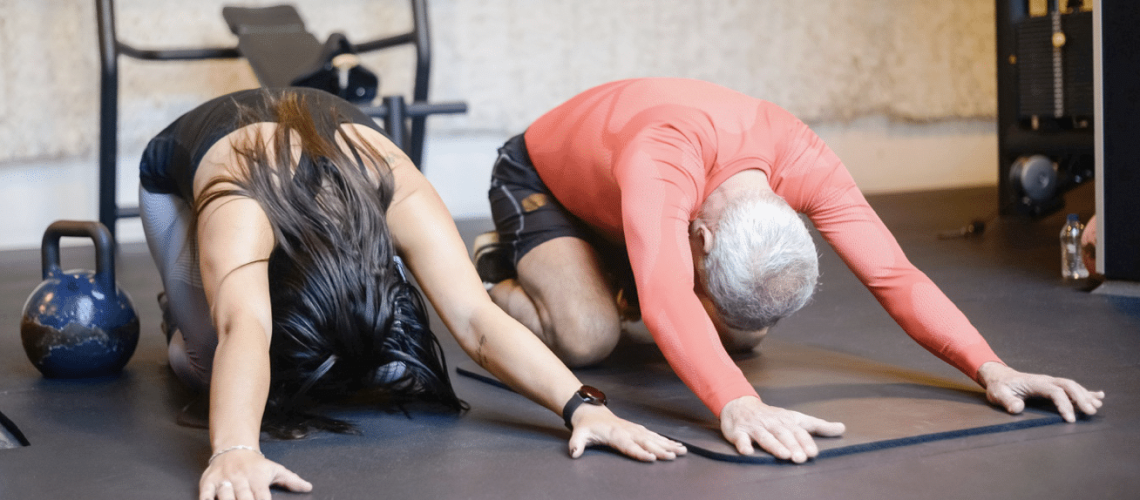In a world often fixated on youth and vitality, the idea of starting a fitness journey later in life, particularly in one’s 50s or beyond, can seem daunting. Add long-term health conditions into the mix, and the challenge may appear insurmountable. However, what many may not realize is that embarking on a fitness journey at this stage of life can be not only feasible but also profoundly transformative. Let’s explore how individuals in their late 50s and beyond can navigate the path to better health and well-being through exercise, even in the presence of long-term conditions.
- Embracing a New Mindset: The first step in embarking on a fitness journey later in life is cultivating a mindset of possibility and resilience. It’s about letting go of preconceived notions about age and limitations and embracing the belief that it’s never too late to improve one’s health and quality of life. Instead of focusing on what you can’t do, focus on what you can do and the progress you can make, no matter how small.
- Consultation with Healthcare Professionals: Before starting any exercise program, it’s crucial to consult with healthcare professionals, including your primary care physician and specialists, to assess your current health status and any long-term conditions you may have. They can provide valuable guidance and recommendations tailored to your individual needs and limitations, ensuring that your fitness journey is safe and effective.
- Tailored Exercise Programming: With the guidance of healthcare professionals, work with a qualified fitness trainer or physical therapist to develop a customized exercise program that takes into account your long-term conditions, fitness level, and goals. This may involve a combination of cardiovascular exercise, strength training, flexibility exercises, and balance training, tailored to your specific needs and abilities.
- Focus on Functional Fitness: When starting a fitness journey later in life, particularly with long-term conditions, it’s essential to prioritize functional fitness — exercises that improve your ability to perform activities of daily living and maintain independence. This includes movements that enhance strength, flexibility, balance, and mobility, helping you navigate daily tasks with greater ease and confidence.
- Gradual Progression and Patience: Rome wasn’t built in a day, and neither is fitness. Recognize that progress may be gradual, especially when starting later in life or with long-term conditions. Focus on consistency and gradual progression, celebrating small victories along the way. Be patient with yourself and trust the process, knowing that each step forward is a testament to your resilience and determination.
- Listen to Your Body: Pay close attention to your body’s signals and adjust your workouts accordingly. If you experience pain or discomfort, modify the exercise or seek guidance from your healthcare team. It’s essential to find a balance between pushing yourself outside your comfort zone and respecting your body’s limits to prevent injury and ensure long-term sustainability.
- Incorporate Mind-Body Practices: In addition to physical exercise, consider incorporating mind-body practices such as yoga, tai chi, or mindfulness meditation into your routine. These practices can help reduce stress, improve mental well-being, and enhance overall quality of life, complementing your physical fitness efforts.
- Celebrate Non-Scale Victories: While weight loss or muscle gain may be common fitness goals, it’s essential to celebrate non-scale victories as well. This could include improvements in energy levels, mood, sleep quality, or overall functional capacity. Every step forward, no matter how small, is a step closer to better health and well-being.
- Build a Supportive Community: Surround yourself with a supportive community of friends, family, or fellow fitness enthusiasts who encourage and uplift you on your journey. Whether it’s joining a fitness class, participating in group workouts, or connecting with like-minded individuals online, having a supportive network can provide invaluable motivation and accountability.
- Celebrate Your Strength and Resilience: Finally, celebrate the strength and resilience you demonstrate every day as you embark on your fitness journey. Recognize that taking the first step toward better health and well-being, especially later in life and with long-term conditions, is a testament to your courage and determination. Embrace the journey, celebrate your progress, and remember that you’re never too old or too limited to live your best life.
In conclusion, starting a fitness journey later in life, especially with long-term conditions, is not without its challenges. However, with the right mindset, support, and guidance, it’s entirely possible to overcome obstacles and achieve remarkable improvements in health and well-being. By embracing exercise as a tool for empowerment and transformation, individuals in their late 50s and beyond can unlock a new chapter of vitality, strength, and resilience, proving that age is truly just a number.

